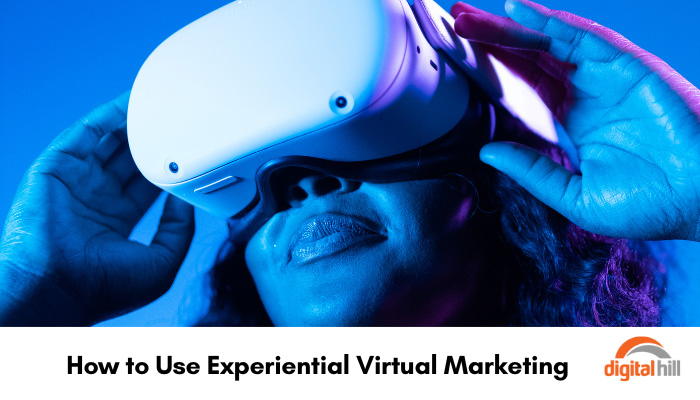How to Use Experiential Virtual Marketing

Experiential virtual marketing is an innovative way to engage customers by creating memorable experiences online. This approach combines interactive elements, virtual reality (VR), and augmented reality (AR) to immerse your audience in your brand. For small and medium-sized business owners, leveraging experiential virtual marketing can drive customer engagement and boost sales. Here’s how you can get started.
Understanding Experiential Virtual Marketing
Experiential virtual marketing involves creating interactive and immersive experiences that allow customers to connect with your brand in a unique way. Instead of passively consuming content, customers actively participate, which enhances their overall experience.
Benefits of Experiential Virtual Marketing
- Enhance Customer Engagement: Interactive elements capture attention and keep customers engaging with the brand.
- Increase Brand Loyalty: Memorable experiences lead to stronger emotional connections with your brand.
- Higher Conversion Rates: Engaged customers are more likely to convert into paying customers.
- Improve Customer Insights: Collect valuable data on customer preferences and behaviors through interactions.
Steps to Implement Experiential Virtual Marketing
1. Define Your Goals
Identify what you want to achieve with your experiential virtual marketing campaign. Whether it’s increasing brand awareness, driving sales, or launching a new product, having clear goals will guide your strategy.
2. Know Your Audience
Understand who your target audience is and what they value. Tailor your virtual experiences to meet their interests and preferences.
3. Choose the Right Technology
Select the appropriate technology for your campaign. Options include:
- Virtual Reality (VR): Create fully immersive environments.
- Augmented Reality (AR): Overlay digital content into the real world.
- 360-Degree Videos: Offer a panoramic view of your content.
4. Create Engaging Content
Develop interactive and engaging content that will captivate your audience. Popular ideas include virtual tours, interactive demos, live giveaways, and immersive storytelling.
5. Promote Your Campaign
Use social media, email marketing, and your website to promote your virtual experiences. Encourage sharing to reach a wider audience.
6. Collect and Analyze Data
Track user interactions and gather data to understand how your audience is engaging with your content. Use this information to refine future campaigns.
Examples of Experiential Virtual Marketing
Virtual Product Launches
Host virtual events to launch new products. Create an immersive environment where attendees can explore product features and ask questions in real time. Consider live giveaways during the event to encourage participation.
Virtual Showrooms
Develop virtual showrooms where customers can interact with your products. This is especially useful for retail businesses looking to replicate the in-store experience online.
Interactive Social Media Campaigns
Run interactive campaigns on social media platforms. Use AR filters, 360-degree videos, and VR experiences to engage your audience in new and exciting ways.
Gamified Experiences
Incorporate gamification into your marketing strategy. Create games or challenges that allow customers to interact with your brand while having fun. This is also a great way to educate your audience about key products or causes.
Tips for Successful Experiential Virtual Marketing
- Keep It Simple: Ensure your virtual experiences are easy to access and navigate. Check that they work properly on all devices.
- Focus on Storytelling: Craft a compelling narrative that resonates with your audience.
- Encourage Participation: Make it easy for users to share their experiences on social media.
- Test and Optimize: Continuously test different elements of your campaign and make adjustments using feedback and data.
Getting Started
Experiential virtual marketing doesn’t require a large budget. Begin with a small-scale campaign to test the waters. Use the insights from this event to expand and improve your efforts. Platforms like Facebook and Instagram offer AR filters and 360-degree video capabilities. Utilize the platforms offering tools that make it easy to create engaging content without significant investment.
Collaborate with Influencers
Partner with influencers to create and promote your virtual experiences. Influencers can help you reach a larger audience and lend credibility to your campaign.
Leverage User-Generated Content
Encourage your audience to create and share their experience at your virtual event. This increases engagement and provides you with valuable content at no additional cost.
Embrace the Future
Experiential virtual marketing offers exciting opportunities for small and medium-sized businesses to engage customers in new and innovative ways. By understanding your audience, defining your goals, and leveraging the right technology, you can create memorable experiences that drive engagement and boost your brand’s visibility. Start exploring the potential of experiential virtual marketing today and see how it can transform your business.
